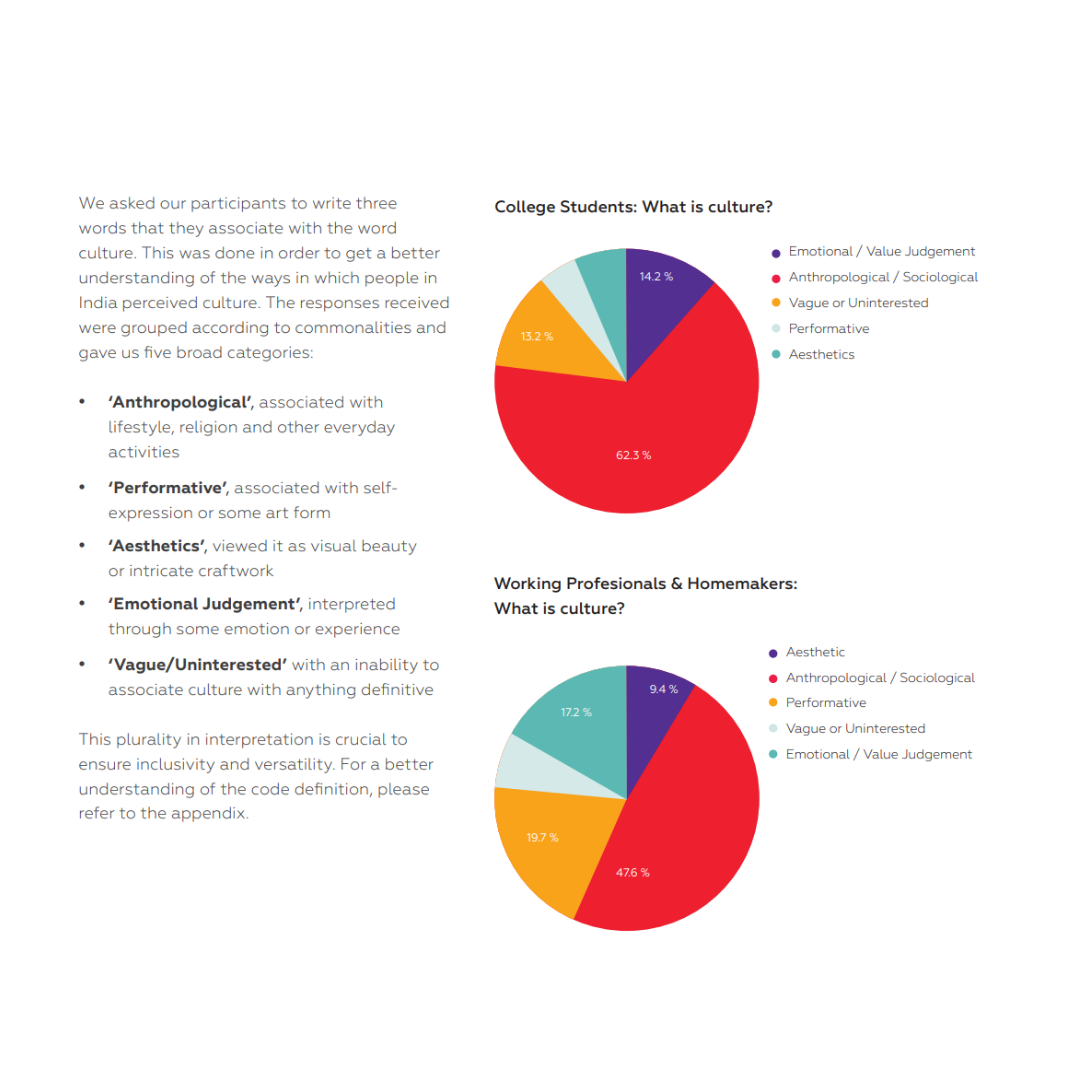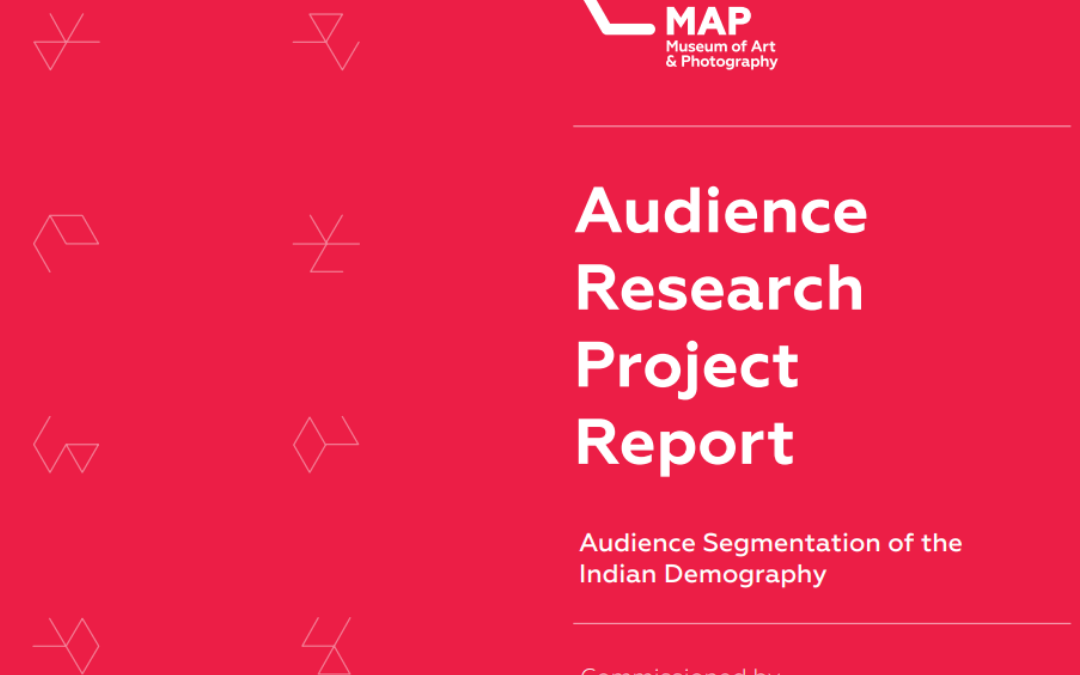A look at a few of the key findings of the recently published audience research report produced by ReReeti for MAP Bangalore, and some thoughts on next steps for audience research in India…
In 2019, MAP Bangalore commissioned ReReeti to undertake a first-of-its-kind audience research project for the Indian cultural sector, mapping the Indian demography’s relationship with, and attitudes towards, arts, culture and the museum. The project began early 2020 and the pandemic hit, shifting it to an entirely online study, and one that also had to look at the Indian audience’s changing attitudes towards arts and culture amidst lockdowns, a pandemic, and a sudden need for solely digital engagement. We have written before about why audience research like this matters.

But what were the most interesting findings from this specific report? Many of these were discussed in a recent webinar which brought together Tejshvi Jain from ReReeti Foundation, Carolina Artegiani from MAP Bangalore, Rashmi Dhanwani from ArtX Company, and Carol Ann Scott from Carol Scotts Associates. This blog looks at three of these key points, and their implications for museum programming and for our understanding of how museums, arts and culture fit into the daily lives of Indians. It also provides three possible areas that ReReeti would like to explore in further audience research projects like this one.
Arts and culture are perceived as largely anthropological and sociological
- For the audience, both young and old, arts and culture is rooted in traditions and the everyday, religious festivals and community events, rather than institutions like museums or art galleries.
- This presents both a challenge for museums to overcome, and an opportunity. Museums can bridge the gap between the everyday and their space by incorporating festivals, foods, and traditions into programming, making the audience feel more connected and offering opportunities to spend time in museum/cultural spaces.
Representation and use of regional languages is very important to the audience
- This applied both to programming & advertising, and to museum signage and panel information, and was equally true for audiences who were equally comfortable with spoken and written English as with other Indian languages.
- To be relevant to their local communities, museums in India must therefore acknowledge, include and represent India’s multilingual nature and local/regional communities and cultures in order to reach a larger homegrown audience.

A wave of visitors with some getting up close to Hokusai’s, The Great Wave. The British Museum, London. Flickr
The audience prefers to explore museums with guidance, and visit in a group
- A look at preferences here demonstrated the audience prefers staff guided tours the most, followed by audio guides. Working professionals & young people visit with family and friends, and senior citizens visit with their spouse. Very few visitors of any age would visit alone, and explore by themselves.
- Group discounts, and offering guided tours around the museum for visitors to book or attend would greatly increase audience engagement and visitor numbers on-site.
There are more findings in this report, each as insightful as the other and all deserving of more analysis and attention. The report not only explored audience preferences, but also looked at contradictions between importance attributed to the arts, and the investment of time and money by the audience. It also details seven distinct audience profiles which demonstrate groups of people who have similar interests, attitudes and habits with fitting arts and culture in their lives. There is a lot to unpick, but for ReReeti, we are now thinking – what’s next?
Here are three areas that we think warrant further exploration:
Looking at the changing post-pandemic world
Our findings, captured in India during and following the first wave of the Covid-19 pandemic, are from a moment in time after which much has changed for public spaces, hygiene and safety requirements, financial and economic stability, and personal or community priorities. We would like to look, after the second wave and recovery, at how museums and arts and culture can fit into people’s lives again, and how much of this would need to be digital.
Museums and accessibility for people with disabilities
A significant part of the study which looks at how museums and arts and cultural spaces can become more welcoming, inclusive and accessible to people with varied disabilities or challenges is yet to come. Barriers to entry for people with disabilities need to be removed, and positive steps taken to ensure that museum visits are an enjoyable and easy experience for people with different sensory needs, sensitivities or physical challenges. Our next study will address this.
Developing a community and culture of audience research in India
In the online discussion about the report, Carol Ann Scott mentioned the need for further research like this, and the development of a community and culture of audience research for the Indian arts, heritage and culture sectors. By sharing this report and manifesto for next steps, ReReeti hopes to support and actively contribute to this space through our work.
The way we see it, the more we understand the needs, expectations and barriers of our audience towards the arts and culture sector, the more work we can do to respectively meet and overcome them.
Read the full report on the MAP Bangalore website, here.








Recent Comments